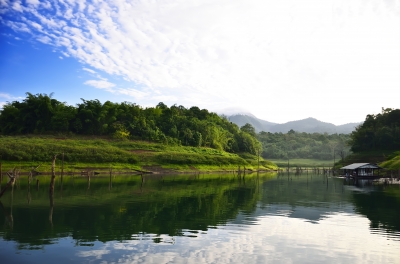Adaptation
The orangethroat
darter, Etheostoma spectabile, has many
adaptations that allow it to survive and adjust to changing
environmental conditions. Environmental conditions, especially
conditions within aquatic systems, can have extreme effects on
the organisms and fish that inhabit those systems. Aquatic
systems can be affected by variations in temperature, pH levels,
temperature, toxins in the water, and so on. Just as varying
environmental conditions can be detrimental or beneficial to
organisms on land, aquatic organisms like fish must be able to
adapt to ever changing environmental conditions. Moreover,
studies have shown that if an environment is relatively variable
(changes in temperature, extremes in seasons, etc.), the fish
species inhabiting those environments have adequate tolerance
for these changing conditions (Strange et al. 2002).
 Image courtesy of FreeDigitalPhotos.net |
Adaptations to changing environmental conditions have been observed for E. spectabile in regards to their thermal tolerance and growth rate. In the study conducted by Strange, Vokoun, and Noltie, orangethroat darters were collected from different locations with known environmental variable between the locations. Each community of Darter were placed and observed in tanks of varying water temperature of 8 C or 24 C (Strange et al. 2002). The results of the experiment suggested a strong correlation between the tolerance levels of individuals in relation to the variability of their environmental conditions within their habitat. The individuals that came from relatively variable environmental conditions had a much greater tolerance compared to the specimens that came from less variable environmental conditions. (Strange et al. 2002).
Beyond physical adaptations, orangethroat darters also utilize other behavioral and social adaptations that influence their interactions within their environments. Darters have unique courtship rituals and behaviors that can be quite variable among different populations of the species. This can be very advantageous for individual communities suited for a specific environment because it reduces the amount of gene flow between different communities (Mendelson 2003). This allows genes adapted for a specific environment to stay within that environment.
___________________________________________________________________
